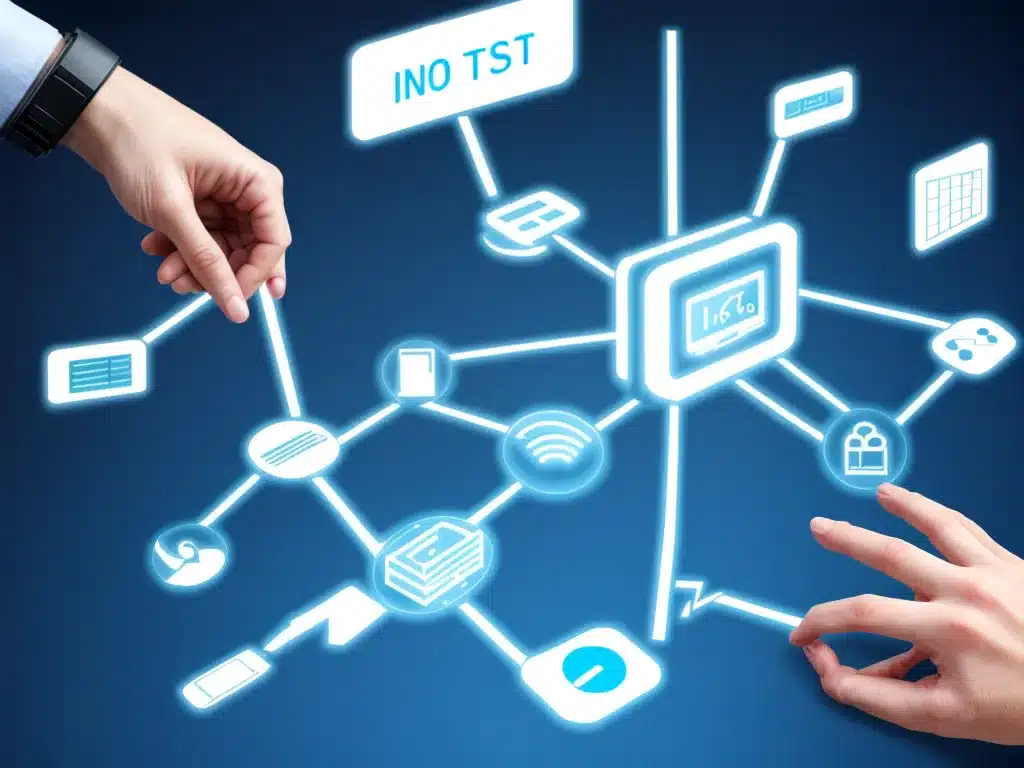IoT in the Workplace: Improving Efficiency
The Internet of Things (IoT) refers to the growing number of internet-connected devices and objects that can collect and share data. Implementing IoT in the workplace provides many benefits that can greatly improve operational efficiency. Here is an in-depth look at how IoT is transforming workplaces.
How IoT Works
IoT involves equipping objects with sensors and internet connectivity so they can gather and exchange data. This allows devices to be monitored and controlled remotely. For example, a smart thermostat can be adjusted from a smartphone to regulate the temperature in an office building.
Some key components of IoT include:
- Sensors – Gather data such as temperature, motion, speed, etc.
- Connectivity – Enables devices to connect to wired or wireless internet networks. Common protocols used include WiFi, Bluetooth, LTE, 5G.
- Data Processing – Software and algorithms process and analyze incoming data from sensors.
- User Interface – Displays information and allows users to control connected devices through apps and dashboards.
Benefits of IoT for Businesses
Implementing IoT offers many advantages that can optimize business operations:
Increased Efficiency
IoT devices can automate tasks and processes, saving time and reducing human effort. For example, inventory can be monitored and restocked automatically through connected sensors.
Enhanced Data Insights
IoT generates vast amounts of data that can be analyzed to gain valuable insights about operations. Leaders can use this to make informed decisions.
Improved Asset Monitoring
Connecting equipment and machinery makes it possible to track their condition, utilization and efficiency in real-time. Issues can be identified early.
Reduced Costs
IoT improves efficiency and productivity, leading to significant cost savings in the long run. It also helps cut down on waste and energy consumption.
Enhanced Safety and Security
Workplaces can be monitored closely for hazards, leaks or intrusions. Emergencies can also be detected early and addressed promptly.
Common IoT Applications in the Workplace
There are many possibilities for IoT implementation across various functions:
Facility Management
- Smart HVAC systems to regulate temperature and airflow.
- Occupancy sensors that automatially turn lights on/off.
- Monitoring of smoke, gas, water leaks through sensors.
- Access control and security through connected cameras and motion detectors.
Fleet and Supply Chain Management
- GPS tracking of vehicles and shipments in real-time.
- Sensors that monitor speed, fuel levels, engine faults, etc.
- Tracking inventory across supply chain through scanning and RFID tags.
Energy Management
- Smart meters to track energy consumption patterns.
- Software that automatically regulates lighting usage.
- Identifying equipment that is inefficient or faulty.
Manufacturing/Assembly Lines
- Sensors that monitor production processes and machinery performance.
- Early detection of errors and failures to prevent losses.
- Tracking and routing of materials and finished products throughout the facility.
Employee Safety
- Wearables that monitor worker vitals, posture, fatigue levels, and exertion.
- Proximity sensors and alarms on machinery/vehicles to prevent collisions.
- Automatic alerts if workers enter hazardous areas or demonstrate signs of distress.
Implementing IoT in Your Workplace
Here are some best practices to consider when deploying an IoT system:
-
Start with a specific pain point you want to solve, rather than general implementation. Focus on use cases that provide the best ROI.
-
Carefully evaluate connectivity requirements and infrastructure. IoT devices need consistent and secure data pipelines.
-
Look at analytics capabilities. It’s critical to make sense of all the data generated and derive insights.
-
Ensure cybersecurity measures are place, such as data encryption and access controls.
-
Consider implications for employees and clearly communicate intended changes. Involve them in the process.
-
Start small, learn from initial projects, then scale. Don’t bring on too many systems at once.
-
Choose experienced partners and vendors to assist with hardware, software, connectivity, security, analytics.
The Future with IoT
IoT adoption in the workplace is still in early stages, but growth is rapid. The opportunities for optimizing operations through connected devices are tremendous. As IoT infrastructure expands and technical capabilities improve, workplaces will become far more data-driven, efficient and responsive.













